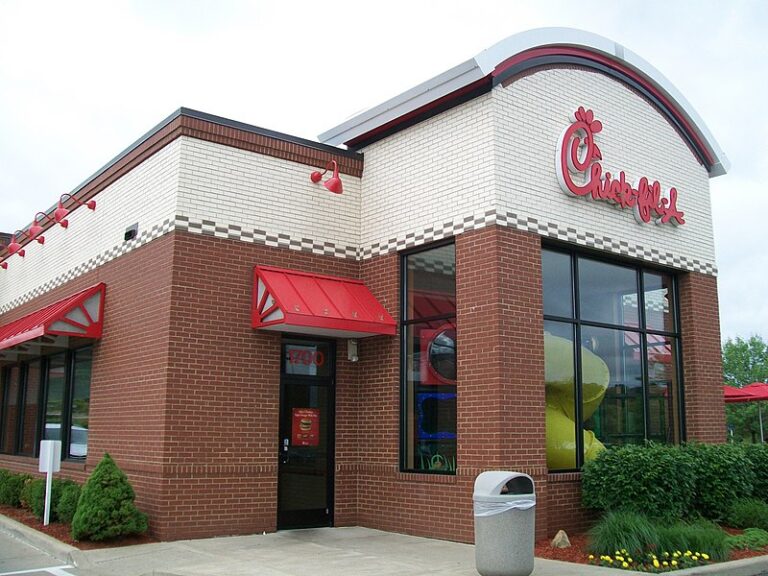Mastering Change: Strategies for Adaptable Leaders
Understanding and Catering to Changing External Pressures
One of the most significant challenges facing leaders today is the rapidly changing external environment in which organizations operate. To stay competitive, leaders must have a deep understanding of the external pressures that impact their organization and be able to adjust their strategies accordingly.
Identifying the main competitors and opponents is a critical first step in understanding the external pressures. However, it is not enough to focus only on the obvious competitors in the marketplace. Leaders must also be aware of potential disruptors and emerging trends that may impact their organization in the future. This requires ongoing market research and monitoring of industry trends and best practices.
Once leaders have identified the main competitors and opponents, they must work to understand the changing external pressures that impact their organization. These pressures can include changes in consumer behavior, shifts in the political or regulatory environment, and emerging technologies. Leaders must be proactive in identifying and understanding these changes, rather than simply reacting to them after the fact.
Once leaders have a clear understanding of the external pressures impacting their organization, they must develop strategies to cater to these changes. This can include developing new products or services, entering new markets, or adapting existing processes and systems to better align with the changing environment. It is critical that these strategies are data-driven and based on a thorough analysis of the external pressures.
The role of data and analytics in understanding external pressures cannot be overstated. With the vast amounts of data available today, leaders have the ability to gain deep insights into consumer behavior, market trends, and industry best practices. By leveraging these insights, leaders can develop strategies that are both effective and sustainable over the long term.
Understanding and catering to changing external pressures is a critical component of adapting to change as a leader. By identifying the main competitors and opponents, understanding the external pressures, and developing strategies based on data and analytics, leaders can position their organizations for success in a rapidly changing world.
Adjusting Management Style to Changing Situations
Adapting to change is not just about adjusting strategies, it’s also about adjusting management style to fit the changing situation. No one can lead the same way year after year, and it’s important for leaders to evolve and understand the people they lead.
One important aspect of adjusting management style is understanding the different personalities and communication styles of team members. Some team members may thrive in a high-pressure, fast-paced environment, while others may prefer a more collaborative and supportive approach. Effective leaders are able to identify these differences and adjust their management style accordingly.
Another important aspect of adjusting management style is being aware of the impact of changes on the team. Change can be difficult and unsettling for team members, and it’s important for leaders to be empathetic and supportive during these times. Effective communication is key, and leaders should be transparent about the reasons for the changes and how they will impact the team.
In addition to adjusting management style to fit the changing situation, leaders must also be aware of the impact of their leadership style on team dynamics. For example, a directive leadership style may be effective in a crisis situation, but may lead to disengagement and burnout over the long term. Effective leaders are able to adjust their leadership style to fit the needs of the team, while still maintaining a clear vision and direction.
Leaders must also be aware of the importance of ongoing professional development and learning. As the external environment continues to change, leaders must be able to adapt and learn new skills in order to stay competitive. This may include attending industry conferences, taking online courses, or participating in leadership coaching.
Adjusting management style to fit the changing situation is a critical component of adapting to change as a leader. Effective leaders are able to identify the different personalities and communication styles of team members, be aware of the impact of changes on the team, adjust their leadership style to fit the needs of the team, and invest in ongoing professional development and learning.
Accepting Change as Positive
Adapting to change can be difficult, but effective leaders are able to view change as an opportunity for growth and development. Rather than fearing change, flexible leaders embrace it and see it as a chance to improve themselves and their organization.
One of the benefits of being flexible and adaptable is that it allows leaders to respond quickly and effectively to changing circumstances. In today’s fast-paced and uncertain business environment, this is more important than ever. Leaders who are able to pivot quickly in response to changing market conditions are more likely to succeed over the long term.
Another benefit of being flexible is that it allows leaders to experiment and try new things. Rather than being wedded to a particular strategy or approach, flexible leaders are willing to take risks and try new ideas. This can lead to breakthrough innovations and new ways of doing things that can help organizations stay ahead of the competition.
Flexible leaders also understand the importance of balancing consistency with the need to adapt. While it’s important to maintain a clear vision and direction for the organization, it’s also important to be willing to change course when necessary. Effective leaders are able to strike this balance and maintain a consistent focus on long-term goals while adapting to short-term changes.
Finally, fostering a culture that values change is an important aspect of accepting change as positive. Leaders who promote a culture of innovation and experimentation are more likely to attract and retain top talent. When team members see that their leaders are open to new ideas and willing to take risks, they are more likely to be engaged and motivated to help drive the organization forward.
Accepting change as positive is a critical component of adapting to change as a leader. Flexible leaders embrace change as an opportunity for growth and development, respond quickly and effectively to changing circumstances, experiment and try new things, balance consistency with the need to adapt, and foster a culture that values change. By doing so, they position their organizations for success in a rapidly changing world.
Case Studies of Successful Adaptation to Change
While the importance of adapting to change as a leader is clear, it can be helpful to examine specific examples of organizations and leaders who have successfully adapted to changing circumstances. In this section, we will examine three case studies of successful adaptation to change and highlight the strategies and best practices that enabled these organizations and leaders to succeed.
Example 1: A Company That Successfully Pivoted During the Pandemic
The COVID-19 pandemic presented significant challenges for many organizations, but some were able to pivot and adapt to the changing circumstances. One such example is the restaurant chain Sweetgreen, which quickly shifted its focus to digital ordering and delivery when its physical locations were forced to close. By leveraging technology and developing new delivery partnerships, Sweetgreen was able to maintain revenue and even grow its customer base during the pandemic.
The key to Sweetgreen’s success was its ability to quickly identify and respond to changing market conditions. By pivoting to digital ordering and delivery, the company was able to meet the changing needs of its customers and maintain its position in the market. This required a willingness to experiment and try new things, as well as a focus on data-driven decision-making and effective communication with customers and team members.
Example 2: A Leader Who Adapted Their Management Style to Improve Team Dynamics
Effective leadership is not just about adapting to external circumstances, it’s also about adapting to the needs of the team. One such example is the case of Mary Barra, CEO of General Motors, who took over the company in the aftermath of a major safety crisis. Barra recognized that the company needed to improve its communication and decision-making processes in order to regain the trust of customers and stakeholders.
To achieve this, Barra implemented a series of changes to the management structure and communication processes within the company. This included creating cross-functional teams to improve collaboration and decision-making, as well as improving communication channels between senior leaders and front-line workers. By adapting her management style to better meet the needs of the team, Barra was able to turn around a struggling company and position it for long-term success.
Example 3: A Company That Embraced Change and Became an Industry Leader
Some organizations are able to go beyond simply adapting to change and actually become industry leaders by embracing new technologies and business models. One such example is the online retailer Amazon, which started out as an online bookstore and has since expanded into a wide range of product categories and services.
The key to Amazon’s success has been its willingness to experiment and take risks, as well as its relentless focus on customer satisfaction. The company has invested heavily in new technologies and logistics systems, enabling it to offer fast and reliable shipping to customers around the world. By embracing change and continually innovating, Amazon has become a dominant player in the retail industry and a model for other organizations seeking to adapt and grow in a rapidly changing world.
These case studies highlight the importance of adapting to change as a leader and the strategies and best practices that can enable organizations and individuals to succeed in a rapidly changing world. By being willing to experiment, taking data-driven decisions, communicating effectively, adapting management style, and embracing change as positive, leaders can position their organizations for long-term success in a rapidly changing business environment.
Overcoming Challenges to Adapting to Change
While the benefits of adapting to change as a leader are clear, there are also significant challenges that must be overcome. In this section, we will examine some common challenges faced by leaders when adapting to change and strategies for overcoming them.
Challenge 1: Resistance to Change
One of the most common challenges faced by leaders when adapting to change is resistance from team members. Change can be difficult and uncomfortable, and some team members may be resistant to new ideas or approaches. To overcome this challenge, it’s important for leaders to communicate clearly and transparently about the reasons for the change and the potential benefits. They should also provide opportunities for team members to provide feedback and input, and involve them in the change process as much as possible.
Challenge 2: Lack of Resources
Another challenge faced by leaders when adapting to change is a lack of resources. Adapting to change often requires significant investment in new technologies, processes, and systems, and this can be difficult for organizations with limited resources. To overcome this challenge, leaders can focus on prioritizing the most important changes and identifying areas where resources can be reallocated from less important initiatives. They can also seek out partnerships and collaborations with other organizations to share resources and expertise.
Challenge 3: Inertia and Complacency
Sometimes, organizations can become complacent and resistant to change due to past successes or a belief that the current way of doing things is the best way. This inertia can make it difficult to adapt to new circumstances and stay competitive over the long term. To overcome this challenge, leaders must be proactive in identifying and addressing complacency within the organization. They can do this by encouraging a culture of innovation and experimentation, investing in ongoing learning and development, and setting ambitious goals that require continuous improvement.
Challenge 4: Fear of Failure
Finally, fear of failure can be a significant barrier to adapting to change. Leaders may be hesitant to take risks or try new approaches for fear of making mistakes or damaging their reputation. To overcome this challenge, leaders can focus on creating a culture that values learning and experimentation, where failure is seen as an opportunity for growth and development. They can also provide support and resources to team members to help them learn from their mistakes and improve over time.
In summary, overcoming challenges to adapting to change requires effective communication, prioritization of resources, addressing complacency, and creating a culture that values learning and experimentation. By doing so, leaders can position their organizations for success in a rapidly changing world.
Embrace Change, Thrive in a Rapidly Evolving World
In conclusion, adapting to change is a critical component of effective leadership in today’s fast-paced and uncertain business environment. Leaders must be able to understand and cater to changing external pressures, adjust their management style to fit the changing situation, and accept change as positive. By doing so, they can position their organizations for long-term success and growth.
Adapting to change requires a willingness to experiment, take risks, and try new approaches. It also requires effective communication, collaboration, and a focus on data-driven decision-making. Leaders who are able to successfully adapt to change are those who are able to identify and overcome the challenges that come with it, such as resistance from team members, lack of resources, inertia and complacency, and fear of failure.
Effective leaders are also those who are able to foster a culture of innovation and experimentation within their organizations. They recognize that change is inevitable, and that it presents an opportunity for growth and development. By promoting a culture of continuous improvement and learning, leaders can attract and retain top talent and position their organizations for long-term success.
In today’s rapidly changing business environment, the ability to adapt to change is more important than ever. By following the strategies and best practices outlined in this article, leaders can position their organizations for success and thrive in a constantly evolving landscape.






